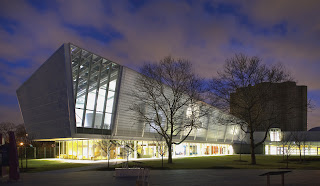1. Which building typology are you researching?
-Science Center of Astronomy/Observational Deck/Observatory
2. Why are you researching this building typology?
-The Earth is but a speck of sand in a much grander picture, which
we call the universe. To be able to observe its ever changing typography is an
amazing scientific feat. Do you ever wonder what’s in the center of our galaxy?
What other planets can be habitable? Or even why black holes exist? All of
these have been answered by scientific observation through many years and there
are still plenty of answers to be discovered. I want the center to be able to
teach others that Earth is not the only thing in this galaxy. There are trillions
upon trillions of stars that are being born and destroyed every second and I
want them to know why. I want them to be able to gaze into the night sky and
have a deeper understanding of what they’re looking at. That is why an
astronomy center would be a great addition to New York's attractions.
3. What is the specialty of this building type you would like to research i.e. museum for dance, school for digital media...
-A learning center for astronomy.
4. What are the examples that you will be researching... list the examples, location and architect (10 examples)
Connecticut Science Center, US
Architect: César Pelli & Associates
Liberty Science Center, NJ
Architect: W.Lerman
Kitt Peak National Observatory, US
Architect: Nicholas U. Mayall
NY Hall of Science, US
Architect: Alan Friedman
Observation Tower on the River Mur, Auestria
Architect: terrain:loenhart&mayr
Architect: Andrew Ellicott Douglass
Griffith Observatory, California
Architect: John C. Austin and Frederick M. Ashley
Arizona Science Center, Phoenix Arizona
Architect: Comoyer-Hedrick Inc.
Detroit Science Center, Michigan
Architect: Neumann/Smith
Yerkes Observatory, Wisconsin
Architect: Henry Ives Cobb
5. What are your goals for working with this building type?
-To teach the community about the universe.
6. What are the program elements that you see included at this point in your building?
-Observation Deck
-Observatory with telescope
-Dedicated sections of the building pertaining to different elements of the universe.
i.e. Black Hole Center
Fusion & Gravity
Solar Systems
Big Bang Theory
Composition of planets
Asteroids, Meteors, & Comets
Dark Matter
Supernovas
Types of stars
Life cycle of a star
-Educational Tours
-Kid's playroom (Astronomy Themed)
-Sextant Sculpture (Outside)
-Theater for documentaries
-Interactive Models
-Bathrooms
-Food Court
-Gift Shop







































